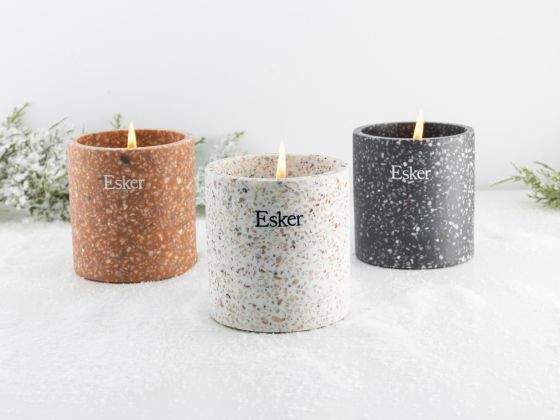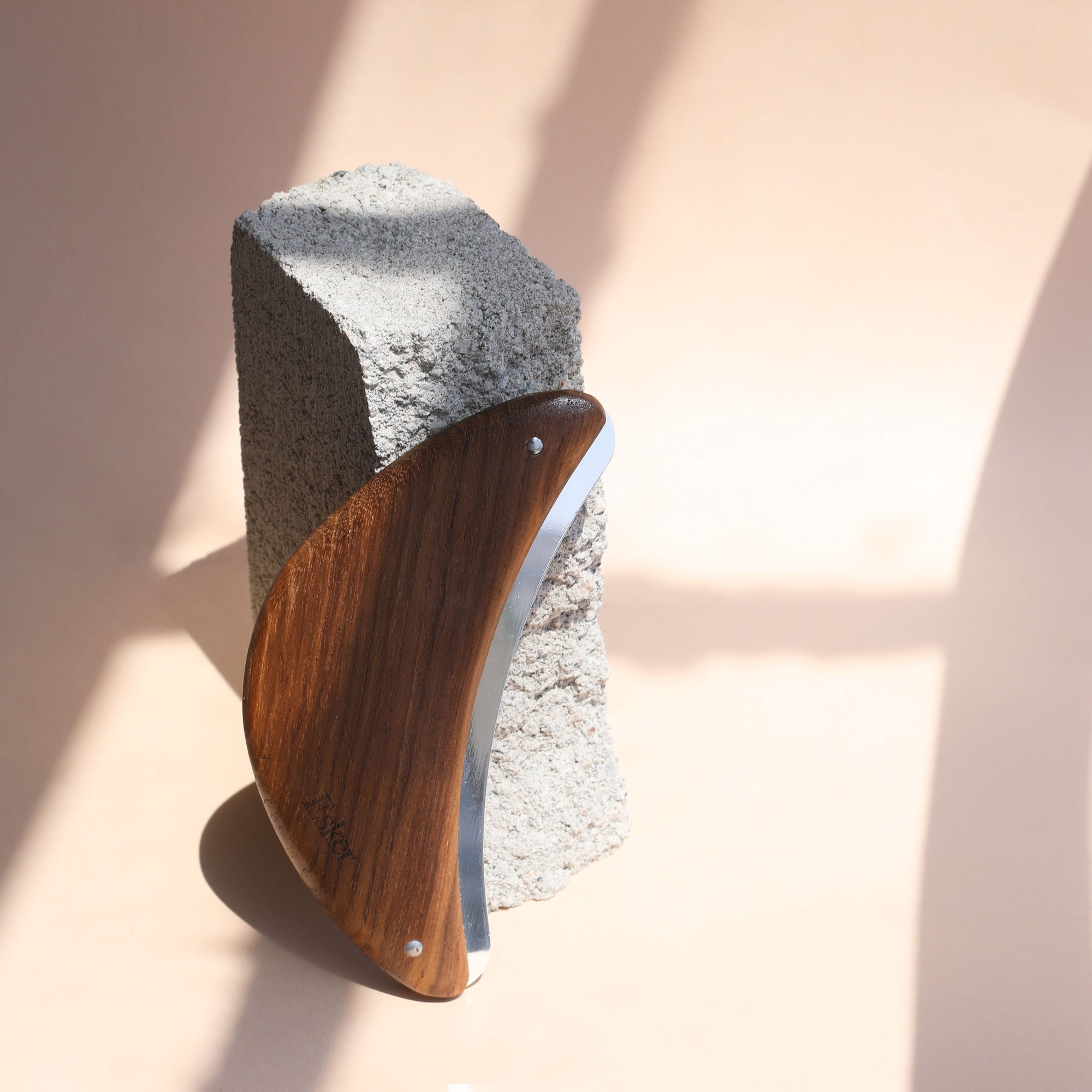One of our first and most important pillars at Esker is the idea that self-care is a ritual to embrace daily; that taking pause to care for your body is a means of respect and thanks for all that our bodies do for us. It’s hard, though, to fully embrace this mentality if the products we love and use don’t extend a sense of respect or appreciation for the planet we live on.
While a lot of us might be on top of it when it comes to recycling items in our kitchens, we often fall short in the bathroom. According to a Unilever study, 86% of Americans claim they generally recycle, and 46% say they always recycle items from their kitchen, however only 34% said they bring empty bathroom products into the recycling bin.
Though many brands (including us) have taken measures to reduce their use of plastic by using glass, eliminating plastic when there’s an alternative available, and choosing to use post-recycled and eco-friendly packaging options, properly disposing of these materials and the beauty products themselves is extremely important in our collective journey to diminish our carbon footprint(s) within the cosmetics and skincare industries. If you’ve reached the end of your Esker body oil or any other beauty product and you’re not exactly sure what to do next, read on. Here’s your go-to guide to correctly tossing all of your empty products.
1. Look at the Labels
PET - Polyethylene Terephthalate or Plastic #1 is one of the most common types of plastics used in our everyday products. Plastic water bottles, food containers, mouthwash bottles, as well as most cosmetics and plastic skincare containers are made with plastic #1. Plastic #1 is known to be easily recyclable and accepted at almost all recycling plants!
HDPE - High Density Polyethylene or Plastic #2 is another very common plastic. Grocery bags, household items, shampoo bottles and other hearty cosmetics bottles are made using HDPE. Like Plastic #1, it can be easily and efficiently recycled. HDPE plastic can also be reused and both clear and colored HDPE plastics are often repurposed into other items after being recycled.
PVC - Though Polyvinyl Chloride or Plastic #3 is another very commonly used plastic, it isn’t easily recyclable. It’s a soft, flexible plastic frequently used to make food wrapping, garden hoses, pet toys, etc. Plastic #3 has been dubbed “poison plastic” because it contains toxic phthalates which can seep out throughout the product’s life. Less than 1% of Plastic #3 gets regularly recycled.
 image courtesy of @cove
image courtesy of @cove
While a lot of companies have looked to lower their environmental impact by using compostable plastic or bioplastics (plastics made from plants or other biological materials instead of petroleum) these types of plastics cannot be recycled at a traditional recycling facility. These are often labeled as #3-#7 plastics on your products, or they’ll feature a label that clearly identifies it’s a bioplastic. These types of plastics should be sent to an industrial compost. Check your city’s recycling rules to find out what to do with these types of products or if there is a composting center in your area. Here’s a general list to reference as you recycle:
A few other nice-to-know recycling tips...
- Glass is recyclable as long as it’s cleaned and any of its attachments (tops, tubes, etc.) are removed. Check with your recycling program to see which glass colors they’ll accept. Most programs accept the three basic colors: clear, blue, and brown.
- Pouches and soft plastic tubes don’t often make it to the recycling bin as the contents are difficult to clean. Feel free to throw these in the trash unless your product specifically says it can be recycled.
- Aluminum and steel (think dry shampoo cans) are fine to be recycled.
Got empties from Esker and you’re not sure what to do with those? Here’s a helpful primer:
Body Oils
- Flatten and recycle cardboard packaging
- Remove the pump and tube and toss into the trash (these aren’t recyclable)
- Remove the label and toss into the trash
- Recycle the bottle
Body Washes
- Flatten and recycle cardboard packaging
- Remove the pump and tube and toss into the trash (these aren’t recyclable)
- Remove the label and toss into the trash
- Recycle the bottle
Body Tools
- We use recycled cardboard for all of our Esker packaging. Flatten the cardboard packaging and recycle!
Hand Soap
- Using glass bottles for our hand soaps was a big priority so that we would be able to recycle them after they’re empty.
- Remove the pump and tube and toss into the trash
- Either recycle the glass bottle or repurpose it as a vase for flowers
If you’ve ever purchased a gift set from Esker, hold onto the linen bag the products came in and repurpose it for traveling with toiletries, jewelry, or consider reusing it as a gift bag!

2. Clean it Out
Whether your product is glass or plastic, you have to make sure the contents inside it are completely cleaned out if you want it to get recycled.Typically, items that still contain 10% or more of the residual product will not get recycled. If you’re cleaning out a bottle, we recommend grabbing a long Q-tip to grab any remaining formula. Bottled items that you’ve washed out with water don’t need to be completely dry. If contents are left inside your empty product, they’ll likely throw out the entire batch of recyclables to avoid contamination!
3. Break it All Down
Many bathroom items like our Body Oils, for example, are made from multiple different types of materials. The bottle is glass, but the spray tube and its cap are plastic. Other items like serums with droppers, or even tubes of lip gloss or mascara are all comprised of different materials that need to be tossed separately. Items like a cleaned out glass bottle will definitely make it into the recycling bin, but if the plastic spray top and its cap are still on it may not, so separate and then recycle accordingly.
4. Explore Alternative Recycling Programs
Before you thoroughly clean out anything and throw it in a bin, you should familiarize yourself with your city’s recycling program. Each city has a different set of rules and standards on what types of materials they’ll accept, so knowing ahead of time will save you a lot of time. This helpful recycling site clarifies what your community accepts. If you want to take it a step further, TerraCycle is a company specifically set up to accept difficult-to-recycle items, like multi-piece skincare and cosmetics products, and in some cases non-recyclable pre-consumer and post-consumer waste. This is a great option if you’ve been holding on to lots of empties and aren’t sure what to do next. Most basic recycling centers are equipped with automatic sorter machines, however really small containers and tubes can get missed and will ultimately go to a landfill, so programs like TerraCycle are especially advantageous here.
Each city has a different set of rules and standards on what types of materials they’ll accept, so knowing ahead of time will save you a lot of time. This helpful recycling site clarifies what your community accepts. If you want to take it a step further, TerraCycle is a company specifically set up to accept difficult-to-recycle items, like multi-piece skincare and cosmetics products, and in some cases non-recyclable pre-consumer and post-consumer waste. This is a great option if you’ve been holding on to lots of empties and aren’t sure what to do next. Most basic recycling centers are equipped with automatic sorter machines, however really small containers and tubes can get missed and will ultimately go to a landfill, so programs like TerraCycle are especially advantageous here.






